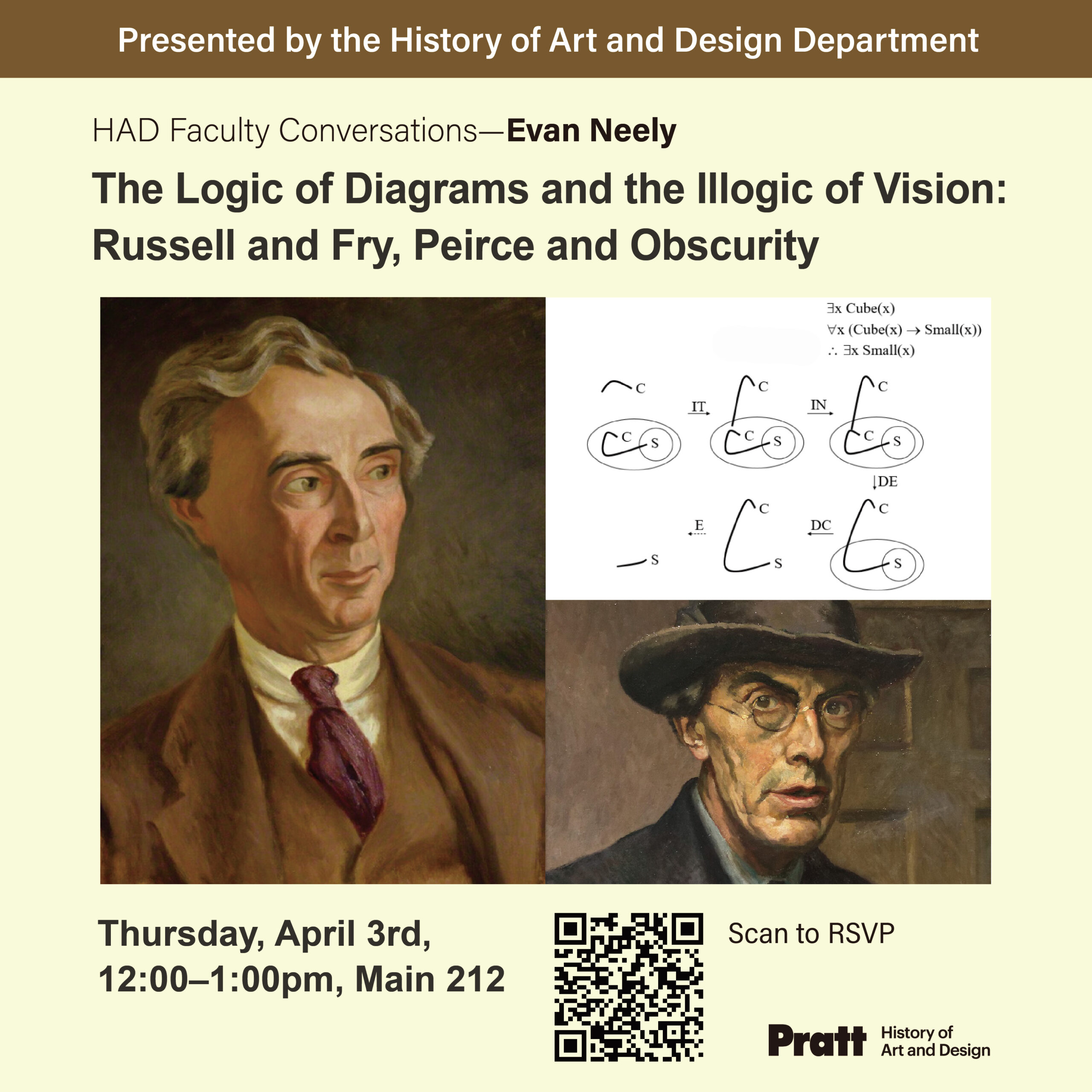The Logic of Diagrams and the Illogic of Vision: Russell and Fry, Peirce and Obscurity
April 3, 2025 12:00 PM – 1:00 PM
Main 212

Diagrams have been central to scientific and technological development since methods to print them in mass quantities were invented. Yet in modern logic, the language of choice has been the symbolic notation Bertrand Russell and Alfred North Whitehead devised from the initial efforts of the Italian mathematician, Giuseppe Peano, not the explicitly diagrammatic “Existential Graphs” that Charles Sanders Peirce proffered at the same time. This talk will suggest not only that the reasons why logicians preferred Russell’s notation to Peircian diagrammatic methods have everything to do with assumptions about the nature of vision and its connections to mind and epistemology, but that foundational texts in formalist art theory by Roger Fry and Clive Bell were influenced by the communal ideals they shared with Russell, as Cambridge Apostles and members of the Bloomsbury Group. Formalism, an effort to theorize a new norm for talking about representational and non-representational art alike, will be treated as an analogue to the efforts of the authors of the Principia Mathematica to construct a symbolic language that would be normative for the practice of scientific theory.
Evan Neely is Assistant Chair of the History of Art and Design Department at Pratt Institute. He received his PhD from Columbia University in 2010. His recent book is Political Economy, Race, and the Image of Nature in the United States, 1825-1878 (Routledge, 2024). He has two current book projects: The Semiological Economy of New York City, 1848-1918 (in contract with Routledge) and a project on the theoretical connections among logic, the philosophy of science, and formalist art theory at the turn of the twentieth century tentatively titled The Logic of Diagrams and the Illogic of Vision.